Results 1 to 9 of 9
 17Likes
17Likes
Thread: Antique store Anvil
-
07-05-2013, 05:12 PM #1Senior Member



- Join Date
- Apr 2012
- Location
- Diamond Bar, CA
- Posts
- 6,553
Thanked: 3215 Antique store Anvil
Antique store Anvil
I picked up this anvil the other day at an antique store for 5 dollars. It was a bit rusty and oily but in good condition and a nice size 6X1.75 in. It cleaned up nicely.
What is interesting is that,
1. It appear to be plated, nickel I think then painted. And
2. It is magnetized, fairly strong pull. It should be nice for razors work.
Any Ideas why it would be magnetized? Other than to hold the steel. Is it specific for some trade?
Marty
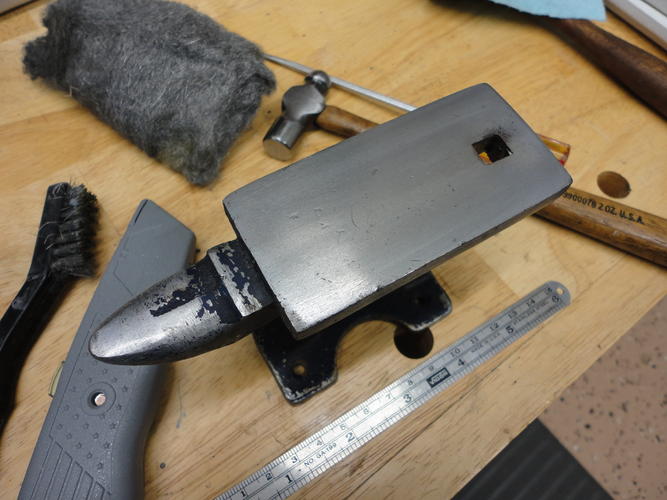

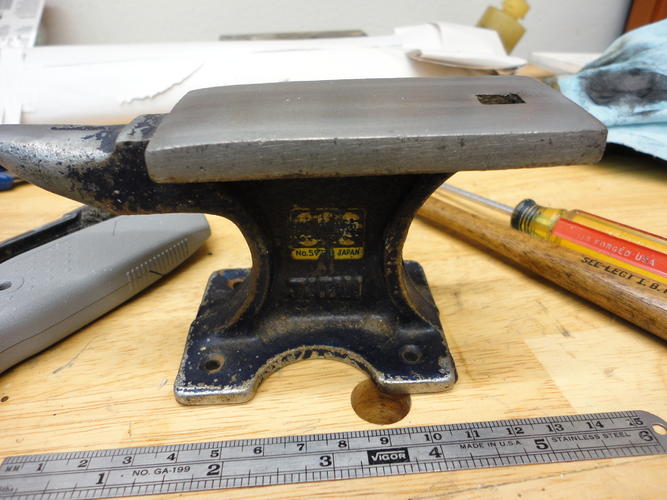
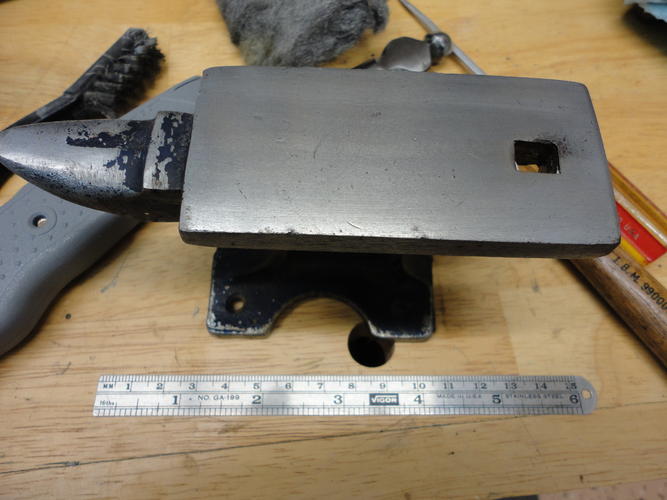
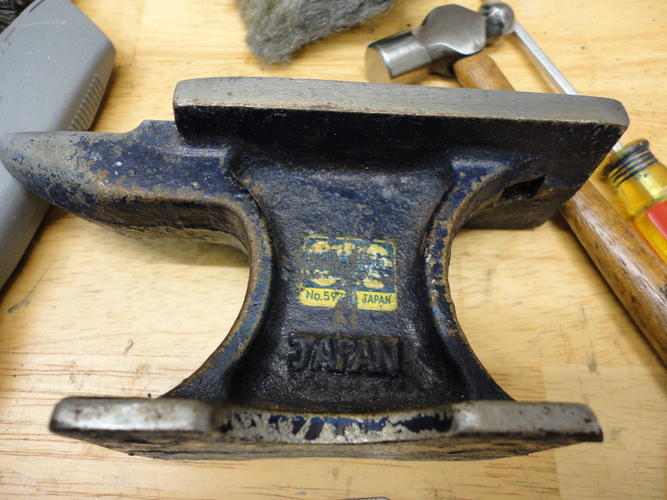
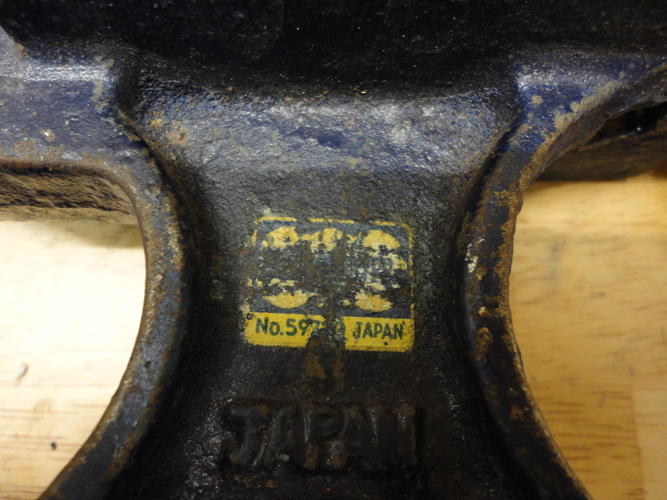 I picked up this anvil the other day at an antique store for 5 dollars. It was a bit rusty and oily but in good condition and a nice size 6X1.75 in. It cleaned up nicely.
I picked up this anvil the other day at an antique store for 5 dollars. It was a bit rusty and oily but in good condition and a nice size 6X1.75 in. It cleaned up nicely.
What is interesting is that,
1. It appear to be plated, nickel I think then painted. And
2. It is magnetized, fairly strong pull. It should be nice for razors work.
Any Ideas why it would be magnetized? Other than to hold the steel. Is it specific for some trade?
Marty
Last edited by Euclid440; 07-05-2013 at 05:19 PM.
-
07-05-2013, 05:44 PM #2Historically Inquisitive



- Join Date
- Aug 2011
- Location
- Upstate New York
- Posts
- 5,782
- Blog Entries
- 1
Thanked: 4249
Im no blacksmith expert but with the very large anvils, they use a magnet underneath to quiet them, to make the ring almost go away.
-
07-08-2013, 09:59 PM #3

That's a neat little anvil. Nice find!
-
The Following User Says Thank You to CastSteel For This Useful Post:
Euclid440 (07-09-2013)
-
07-09-2013, 02:04 AM #4
-
07-09-2013, 04:13 AM #5
-
07-09-2013, 11:16 AM #6

For light work that would be ok. For heavy forging work it would be unsuitable because the table is not supported except in the middle.
Til shade is gone, til water is gone, Into the shadow with teeth bared, screaming defiance with the last breath.
To spit in Sightblinder’s eye on the Last Day
-
07-09-2013, 04:22 PM #7

The anvil is a soft grey iron casting. I agree with Bruno. If it can be mounted solidly, and if you have a lot of space, it would be a razor renewal item. If not, it could take up too much space to have around the bench. Drill a couple of small ( 1/16th inch )holes through it to use for punching out pins. The material is soft and, believe it or not, it will get dinged by the setting / peening of brass pins. Make a couple small one third hollow dents for pinning with a Dremel round burr.
Just my take on the anvil.
~Richard
-
07-11-2013, 11:24 AM #8Senior Member



- Join Date
- Apr 2008
- Location
- Essex, UK
- Posts
- 3,816
Thanked: 3164
I agree with Richard, especially about the surface dimpling with peening. I have flattened the top of my small anvils countless times to get rid of this. Incidentally, with regard to the softness I drilled a small hole, only a few mm deep, to sit the end of the brass rod in while peening the end. Over many years and many 'flattenings' that hole has got quite deep - 4 or 5mm. I guess some fine abrasive matter in the air, general muck and so on, collect in the hole and the rod helps to abrade the iron with this mix. I was told that the ancient Egyptians used a similar method to make holes in granite with a copper bar and fine sand. Hate to think how many years that could take!
Regards,
NeilLast edited by Neil Miller; 07-11-2013 at 01:24 PM.
-
07-11-2013, 03:45 PM #9

FWW. Niel has the right of it.
As to why the cast iron does that there are a couple of reasons. The iron is poor and as cheaply gathered as possible made up of all sorts of scrap. It is poured rather cold and it chills where it meets the sand mould. That means that the surface is harder than the interior. Also that means that the inside iron is , to use a poor term, stretched from the inside outward as it cools and is less dense than the surface. Looking at it under a high power glass after it has oxidized a bit you may see that the surface appears to be a bunch of crystals near to each other rather than a homogenous surface.
For a good example of that, look at the head of a cheap cast hammer. If you file it and sand it to a fair finish, you will see a darker grain in the center of that striking surface. That is why a good steel hammer is almost required for good peening. Otherwise the hammer itself is dented by the hardening brass or German silver as you peen. Non-ferrous materials harden as the are worked upon very quickly.
Odd thought: The archeologists in Egypt doing a granite rock carving for TV were cussing about having to reheat and remake the copper tools every so often. Shucks, they could have just beat the shape again into a useable end without softening / annealing the tool and making it less useful.
More useless drivel from the half vast fund of misinformation!
~Richard
-
The Following User Says Thank You to Geezer For This Useful Post:
Neil Miller (07-11-2013)



 LinkBack URL
LinkBack URL About LinkBacks
About LinkBacks






 Reply With Quote
Reply With Quote



